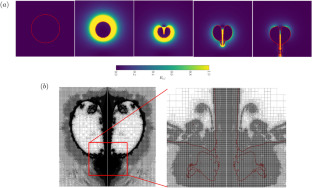A Review of the Accuracy of Direct Numerical Simulation Tools for the Simulation of Non-Spherical Bubble Collapses
Abstract
Numerical methods for the simulation of cavitation processes have been developed for more than 50 years. The rich variety of physical phenomena triggered by the collapse of a bubble has several applications in medicine and environmental science but requires the development of sophisticated numerical methods able to capture the presence of sharp interfaces between fluids and solid/elastic materials, the generation of shock waves and the development of non-spherical modes. One important challenge faced by numerical methods is the important temporal and scale separation inherent to the process of bubble collapse, where many effects become predominant during very short time lapses around the instant of minimum radius when the simulations are hardly resolved. In this manuscript, we provide a detailed discussion of the parameters controlling the accuracy of direct numerical simulation in general non-spherical cases, where a new theoretical analysis is presented to generalize existing theories on the prediction of the peak pressures reached inside the bubble during the bubble collapse. We show that the ratio between the gridsize and the minimum radius allows us to scale the numerical errors introduced by the numerical method in the estimation of different relevant quantities for a variety of initial conditions.



 求助内容:
求助内容: 应助结果提醒方式:
应助结果提醒方式:


